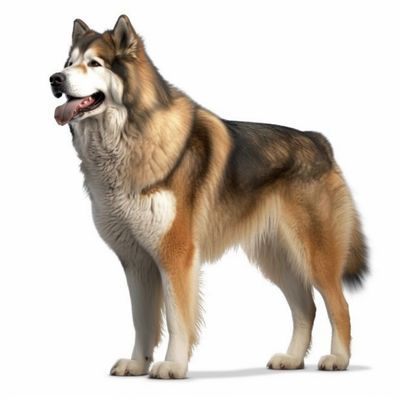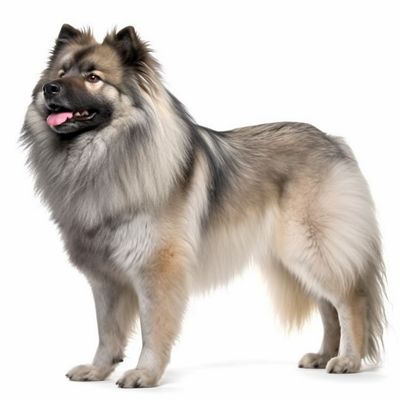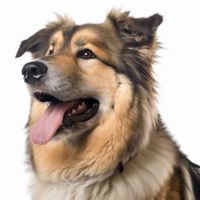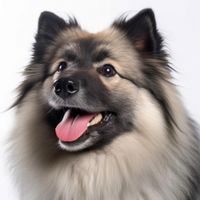Cocker Spaniel - vs - Alaskan Malamute - vs - Keeshond

Cocker Spaniels are medium-sized dogs, weighing 20-30 lbs, with a height of 14-16 inches.
Cocker Spaniels enjoy daily walks, playtime, and moderate exercise to maintain their physical and mental health.
Cocker Spaniels are intelligent and eager to please, making them relatively easy to train with patience and consistency.
Cocker Spaniels are intelligent dogs known for their problem-solving skills and quick learning ability.
Cocker Spaniels are adaptable and can thrive in various living situations, including apartments and houses.
Cocker Spaniels can be good with kids, especially when socialized from a young age.
Cocker Spaniels can get along well with other pets when properly socialized.
Cocker Spaniels can tolerate cold weather but should be protected from extreme cold with appropriate clothing and shelter.
Cocker Spaniels can handle some heat but should be provided with shade, water, and limited time outdoors in high temperatures.
Cocker Spaniels have medium shedding due to their long, silky coats.
Cocker Spaniels require regular grooming, including brushing, to keep their coats healthy and free of mats.
Cocker Spaniels have average bark tendencies and may bark for various reasons, such as alerting their owners or during playtime.
Cocker Spaniels may have some health issues, requiring regular veterinary checkups and preventative care.

Alaskan Malamutes are large dogs, weighing 75-85 lbs, with a height of 23-25 inches.
Alaskan Malamutes have a medium energy level and require regular exercise and mental stimulation.
Alaskan Malamutes need a significant amount of exercise, including daily walks, runs, and opportunities for play and exploration.
Alaskan Malamutes can be challenging to train due to their independent nature. Consistent, positive reinforcement and patience are essential.
Alaskan Malamutes are highly intelligent dogs and excel in various dog sports and activities, especially those involving endurance and strength.
Alaskan Malamutes can adapt to different living situations, but they need plenty of space and exercise to thrive.
Alaskan Malamutes are good with children when properly socialized and supervised.
Alaskan Malamutes can get along with other pets, but their high prey drive may require caution around smaller animals.
Alaskan Malamutes are well-suited for cold climates, thanks to their thick, double-layered coats.
Alaskan Malamutes are not well-suited for hot climates and need to be monitored for signs of overheating during exercise.
Alaskan Malamutes have thick double coats that shed heavily, especially during seasonal shedding periods.
Alaskan Malamutes require frequent grooming, including regular brushing and occasional bathing to keep their coats clean and healthy.
Alaskan Malamutes bark occasionally, usually only when necessary or provoked.
Alaskan Malamutes may experience some health issues and require additional care and attention, such as regular veterinary checkups, preventative care, and potential medication or treatments.

Keeshonds are medium-sized dogs, weighing 35-45 lbs, with a height of 17-18 inches.
Keeshonds have a medium energy level and enjoy a balance of activity and relaxation.
Keeshonds need regular exercise, including daily walks and play sessions, to stay happy and healthy.
Keeshonds are intelligent and highly trainable, responding well to positive reinforcement and consistency.
Keeshonds are highly intelligent dogs and can excel in various dog sports and activities, such as agility and obedience.
Keeshonds can adapt to various living situations, including apartments and larger homes, as long as their exercise needs are met.
Keeshonds are good with children, as they are generally friendly, playful, and patient.
Keeshonds can get along well with other pets, especially when raised together.
Keeshonds can tolerate cold climates well due to their thick, double-layered coats.
Keeshonds can tolerate hot climates but need to be monitored for signs of overheating during exercise.
Keeshonds have a thick double coat and shed heavily, especially during seasonal changes. Regular grooming is necessary.
Keeshonds require frequent grooming, including brushing and occasional trimming, to keep their coats clean and healthy.
Keeshonds tend to bark more frequently and may require consistent training to manage their barking.
Keeshonden are generally healthy, but regular veterinary checkups and preventative care are still necessary.



